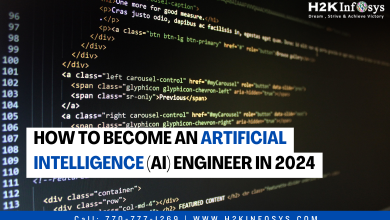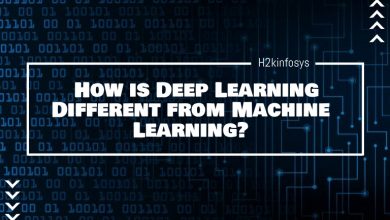What is Feature Learning in AI?

In the context of machine learning, Feature Learning in AI refers to the automatic process by which a model extracts important patterns, structures, or traits (referred to as “features”) from raw data and optimises them to improve its performance in a certain job. It is crucial because machines can automatically learn the most insightful traits rather than manually engineering the least useful ones. This can significantly increase the precision and effectiveness of predictions. Check out the Artificial intelligence online training to learn more.
The concept of Feature Learning in AI
The difficulty of describing data in a way that is both useful and effective lies at the core of many machine learning applications. In the past, specialists would choose and develop features using their domain-specific expertise, but this was time-consuming and could lead to the omission of minute patterns in data. However, feature learning enables a machine learning model to extract data in an adaptive manner and also refine these representations from raw data.
For instance, a convolutional neural network (CNN) can learn features like edges or textures directly from picture input in image recognition, as opposed to manually recognizing and coding them. Similar to this, in audio processing, pitch and tone characteristics can be automatically determined from sound waves.
The machine learning method and the kind of data will determine how feature learning is implemented. Deep feedforward neural networks are one type of technique that can be utilised for tabular data. Transformers or recurrent neural networks (RNNs) may be used for sequence data, such as text or time series.
The focus has switched to automatic feature learning as a result of the development of deep learning over the past ten years, particularly the accomplishments of neural networks in a variety of tasks. In order to handle enormous amounts of complex data, this development in terms of handling vast amounts of complex data and simplifying the machine learning pipeline is very crucial.
Feature Learning in Different Types of Machine Learning
- Supervised learning: In applications like image classification, where labelled data connects raw photos with their appropriate classes, feature learning is important. CNNs could be used to automatically learn characteristics that set one class apart from another, such as forms and patterns.
- Unsupervised learning: The use of feature learning in algorithms like autoencoders aids in data compression and reconstruction. Here, the model attempts to accurately duplicate the input data while learning key properties.
- Self- and semi-supervised learning: Both labelled and unlabeled data are utilised in these methods. A model might, for instance, be trained on both a sizable unlabeled dataset and a small annotated dataset. The model can generalise patterns from labelled to unlabeled data with the use of feature learning.
Real-World Use Cases of Feature Learning
- Facial recognition: Systems like Apple’s FaceID use feature learning to identify distinctive face traits and improve the accuracy of user identification.
- Voice assistants: Siri and Google Assistant employ feature learning to recognize subtle nuances in accents and voice tones.
- Detecting financial fraud: Systems can learn transaction patterns to differentiate between honest and dishonest behaviour.
What are the Benefits of Feature Learning?
- Efficiency: The requirement for manual feature engineering is diminished by feature learning, saving time and resources.
- Adaptability: In dynamic datasets, models can pick up new patterns and adjust to them.
- Accuracy: Predictive performance may be improved by features that are automatically detected. For instance, feature learning in medical imaging can spot minute irregularities that the human eye might overlook.
What Constraints Apply to Feature Learning?
- Dependence on data: The quality of the data has a significant impact on how well-taught features perform. Inaccurate or skewed data might produce false features. This can be avoided by making sure that the dataset is diverse and representative, preprocessing and cleaning the data, and adding expert knowledge for data validation.
- Computational costs: Deep learning models that aid in feature learning can be expensive and resource-intensive. Utilising cloud computing resources or distributed computing systems to effectively train and deploy deep learning models is one technique to get around this problem.
- Interpretability: Models’ learnt features, particularly those from deep networks, might be challenging to interpret, which could be problematic in fields where explanations are essential. It is possible to gain insights into the learned features using approaches like attention processes or feature visualisation tools.
- Overfitting: Overfitting, where a model learns features that are too particular to the training data and performs poorly on new data, is a frequent problem in feature learning. This can be reduced with careful model design and strategies like regularisation or dropout.
How to Implement Feature Learning?
In my opinion, feature engineering refers to the manual feature learning for a machine learning model, which is frequently required when working with tabular data. To make decisions, you must evaluate model performance and choose the most crucial aspects. While the layers of a neural network may automatically learn features from larger, more complicated datasets.
We initially transform the text into vectors and the audio into numerical matrices for speech recognition. Then, we feed both the audio and text vectors into a pre-trained model from HuggingFace. These models are exceptionally good at automatically extracting features from text and audio data because they contain a transformer design. The model can identify intricate details and connections between the audio and text without requiring extensive feature engineering on our part.
We adopt a similar strategy when dealing with picture recognition. The photos are first preprocessed by being transformed into numerical vector representations. After being vectorized, the images are put into convolutional neural networks that have already been trained to automatically recognize and pick up important visual cues like edges, forms, and textures. These characteristics, which the CNN models have extracted, give the downstream classifiers or regression models crucial information they need to generate predictions about fresh picture data.
Instead of depending only on manual feature engineering, feature learning allows models to automatically find useful representations in data. It has contributed to innovations in a variety of fields, from speech recognition to computer vision.
Conclusion To learn more about Feature learning in AI. You can check out the online Artificial Intelligence course.





